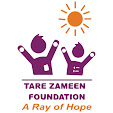Types of eating
disorder
Please note that eating disorders are
complex and some eating issues will not meet diagnostic criteria. All eating
concerns must be taken seriously.
- Anorexia Nervosa
- Binge Eating Disorder
- Other Specified Feeding and Eating Disorders (OSFED)
- Avoidant Restrictive Food Intake Disorder (ARFID)
- Rumination Disorder
- Unspecified Feeding or Eating Disorder (UFED)
Anorexia nervosa is an eating disorder
characterised by weight loss (or lack of acceptable weight gain in growing
children); difficulties maintaining an acceptable weight for height, age, and
stature; and, in several people, distorted body image. folks with eating
disorder typically prohibit the quantity of calories and therefore the
varieties of food they eat. Some folks with the disorder additionally exercise
obsessively, purge via physiological reaction and laxatives, and/or binge eat.
- Dramatic weight loss
- Dresses in layers to cover weight loss or keep heat
- Preoccupation with weight, food, calories, fat grams, and diet. Makes frequent comments concerning feeling “fat.’
- Resists or is unable to keep up a weight acceptable for his or her age, height, and build
- Maintains an excessive, rigid exercise regime – despite weather, fatigue, illness, or injury
- Bulimia nervosa could be a serious, probably critical eating disorder characterised by a cycle of bingeing and offsetting behaviours like self-induced vomiting designed to undo or atone for the results of binge intake.
- Evidence of binge intake, as well as disappearance of huge amounts of food in brief periods of your time or scores of empty wrappers and containers indicating consumption of huge amounts of food
- Evidence of purging behaviors, as well as frequent visits to the toilet when meals, signs and/or smells of vomiting, presence of wrappers or packages of laxatives or diuretics
- Drinks excessive amounts of water or non-caloric beverages, and/or uses excessive amounts of solution, mints, and gum
- Has calluses on the rear of the hands and knuckles from self- induced emesis
- Dental issues, like enamel erosion, cavities, discoloration of teeth from emesis, and tooth sensitivity
Binge
eating disorder (BED)
Binge eating disorder (BED) could be a
severe, critical, and treatable eating disorder characterised by perennial
episodes of intake giant quantities of food (often terribly quickly and to the
purpose of discomfort); a sense of a loss of management throughout the binge;
experiencing shame, distress or guilt afterwards; and not often victimization
unhealthy offsetting measures (e.g., purging) to counter the binge intake. it's
the foremost common eating disorder within the united states.
BED is one in all the latest intake
disorders formally recognized within the DSM-5. Before the foremost recent
revision in 2013, BED was listed as a subtype of EDNOS (now observed as OSFED).
The amendment is very important as a result of some insurance firms won't cowl
eating disorder treatment while not a DSM diagnosing.
Common Signs & Symptoms:
- Secret revenant episodes of binge intake in a very separate amount of your time an amount of food that's abundant larger than most people would eat underneath similar circumstances); feels lack of management over ability to prevent intake
- Feelings of disgust, depression, or guilt when gula, and/or feelings of low vanity
- Steals or hoards food in strange places
- Creates style schedules or rituals to form time for binge sessions
- Evidence of binge intake, as well as the disappearance of huge amounts of food in a very short fundamental measure or a great deal of empty wrappers and containers indicating consumption of huge amounts of food.
Other
Specified Feeding and intake Disorders
(OSFED)
Other Specified Feeding and eating disorders (OSFED) was
antecedently called Eating Disorder Not Otherwise Specified (EDNOS) in past editions of the Diagnostic
and applied mathematics Manual. Despite being thought of a ‘catch-all’
classification that was generally denied amount for treatment because it was
seen as less serious, OSFED/EDNOS could be a serious, critical, and treatable
eating disorder. The class was developed to cover those people who didn't meet
strict diagnostic criteria for anorexia or bulimia nervosa however still had a
big eating disorder. In community clinics, the bulk of people were
traditionally diagnosed with EDNOS.
Common Signs & Symptoms:
Because OSFED encompasses a good kind of
intake disordered behaviours, any or all of the subsequent symptoms could also
be gift in folks with OSFED.
- Frequent episodes of overwhelming terribly great deal of food followed by behaviours to forestall weight gain, like self-induced physiological reaction
- Evidence of binge intake, as well as disappearance of huge amounts of food in brief periods of your time or scores of empty wrappers and containers indicating consumption of huge amounts of food
- Self-esteem excessively associated with body image
- Dieting behaviour (reducing the number or varieties of foods consumed)
- Expresses a desire to “burn off” calories taken in
- Evidence of purging behaviours, as well as frequent visits to the toilet when meals, signs and/or smells of physiological reaction, presence of wrappers or packages of laxatives or diuretics
Avoidant
Restrictive Food Intake Disorder (ARFID)
Avoidant Restrictive Food Intake Disorder
(ARFID) could be a new diagnosing within the DSM-5, and was antecedently
observed as “Selective eating disorder.” ARFID is analogous to eating disorder
in this each disorders involve limitations within the quantity and/or varieties
of food consumed, however not like eating disorder, ARFID doesn't involve any
distress concerning body form or size, or fears of blubber.
Common Signs & Symptoms:
- Dramatic weight loss
- Limited vary of most well-liked foods that becomes narrower over time (i.e., fastidious intake that increasingly worsens)
- Fears of choking or physiological reaction
- No body image disturbance or worry of weight gain
- Pica is an eating disorder that involves intake things that don't seem to be generally thought of as food which don't contain important biological process price, like hair, dirt, and paint chips.
- The persistent intake, over an amount of a minimum of one month, of drugs that don't seem to be food and don't give biological process price
- Typical substances eaten tend to vary with age and availableness. they will embody paper, soap, cloth, hair, string, wool, soil, chalk, talcum, paint, gum, metal, pebbles, charcoal, ash, clay, starch, or ice.
Rumination
Disorder
Rumination disorder involves the regular
regurgitation of food that happens for a minimum of one month. Regurgitated
food could also be re-chewed, re-swallowed, or spit out. Typically, once
somebody regurgitates their food, they are doing not seem to be creating an
attempt, nor do they seem to be stressed, eating disorder, or tired of.
Unspecified
Feeding or eating disorder (UFED)
Unspecified feeding or eating disorder
(UFED) applies to displays within which symptoms characteristic of a feeding
and eating disorder that cause clinically important distress or impairment in
social, activity, or alternative vital areas of functions predominate however
don't meet the total criteria for any of the disorders within the feeding and
intake disorders diagnostic category.
The one feeding and eating disorder class
is employed in things within which the practitioner chooses to not specify the
rationale that the standards don't seem to be met for a selected feeding and
eating disorder, and includes presentation within which there's scarce data to
form a a lot of specific diagnosing (e.g., in hospital room settings).








0 Comments